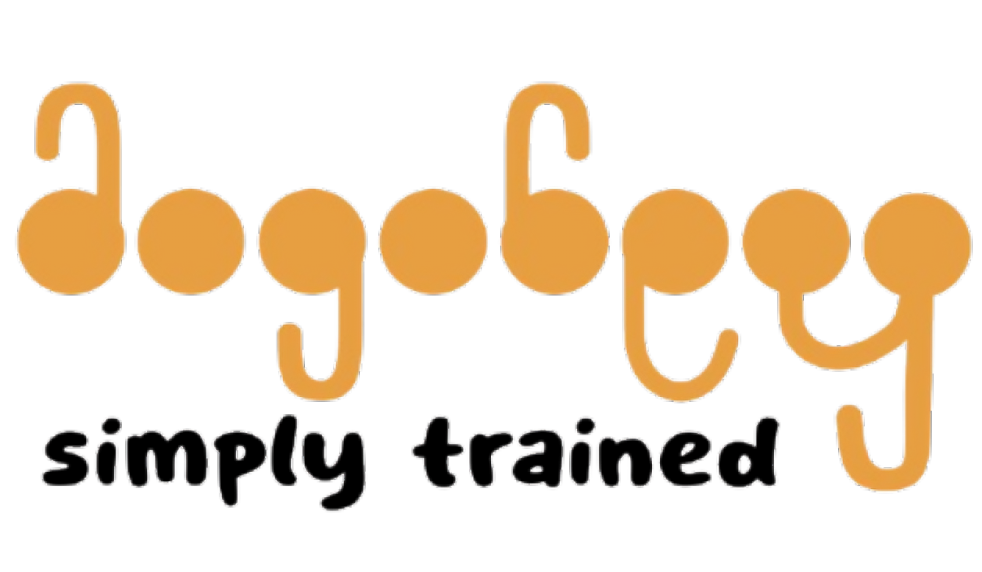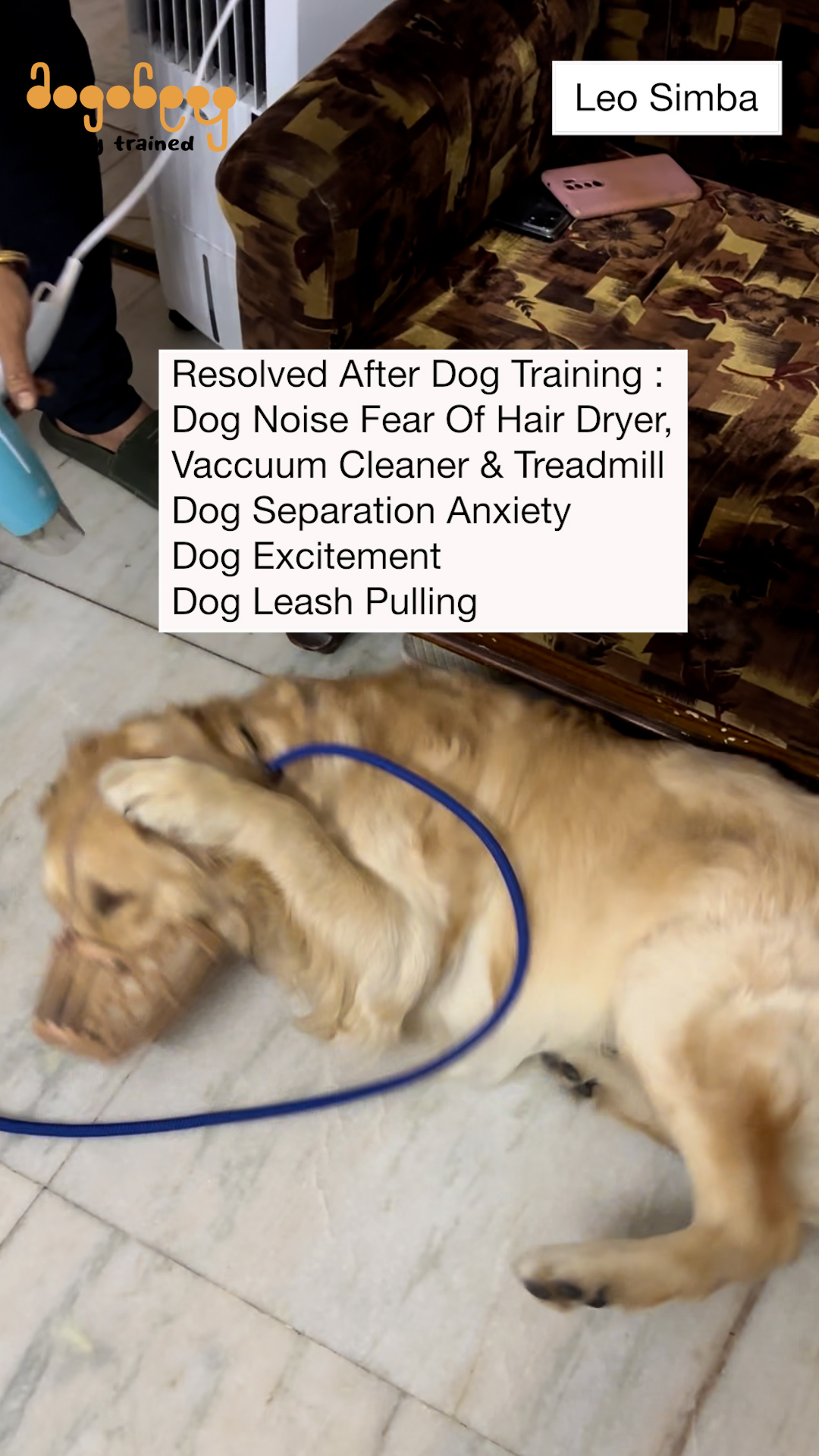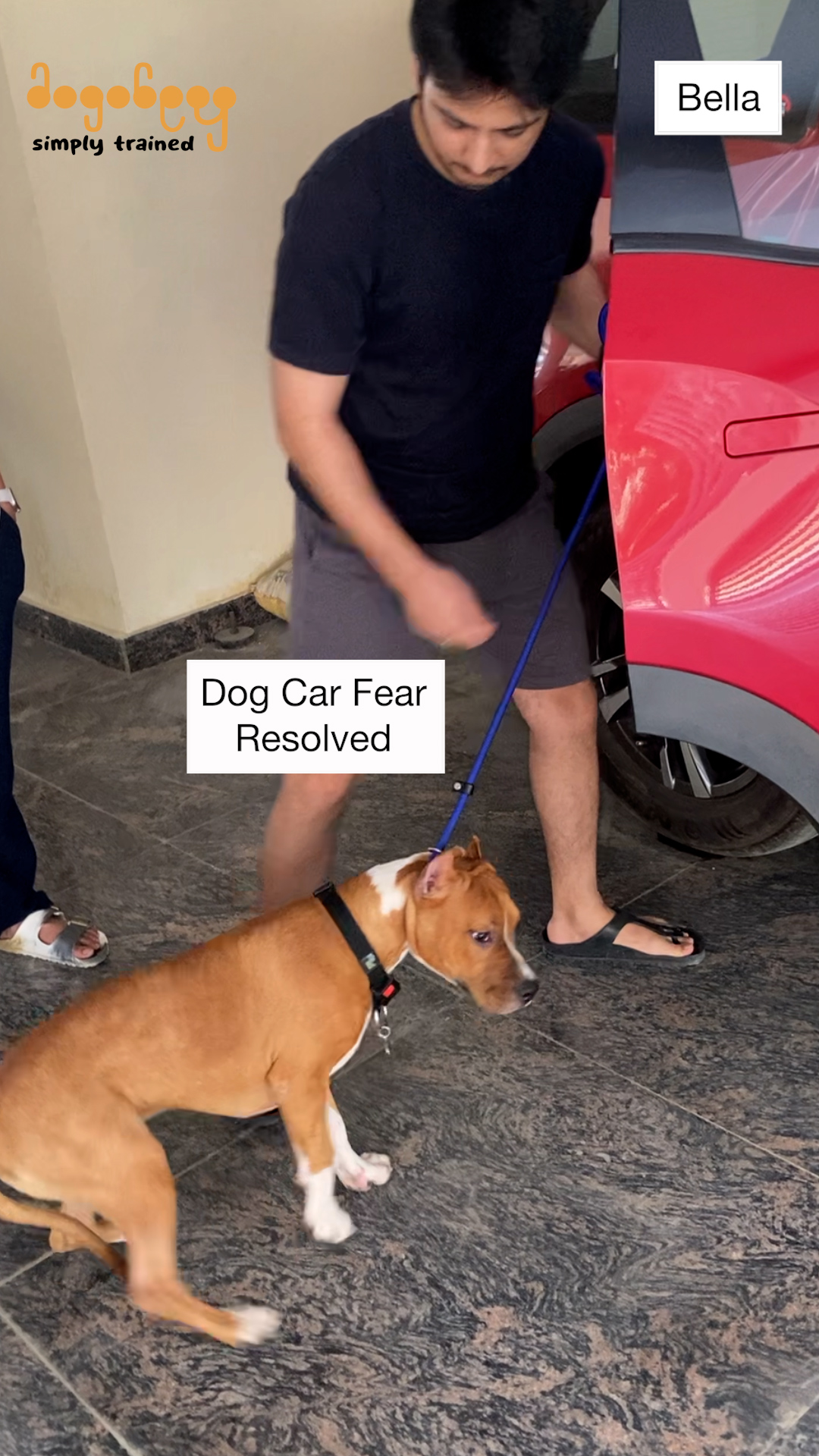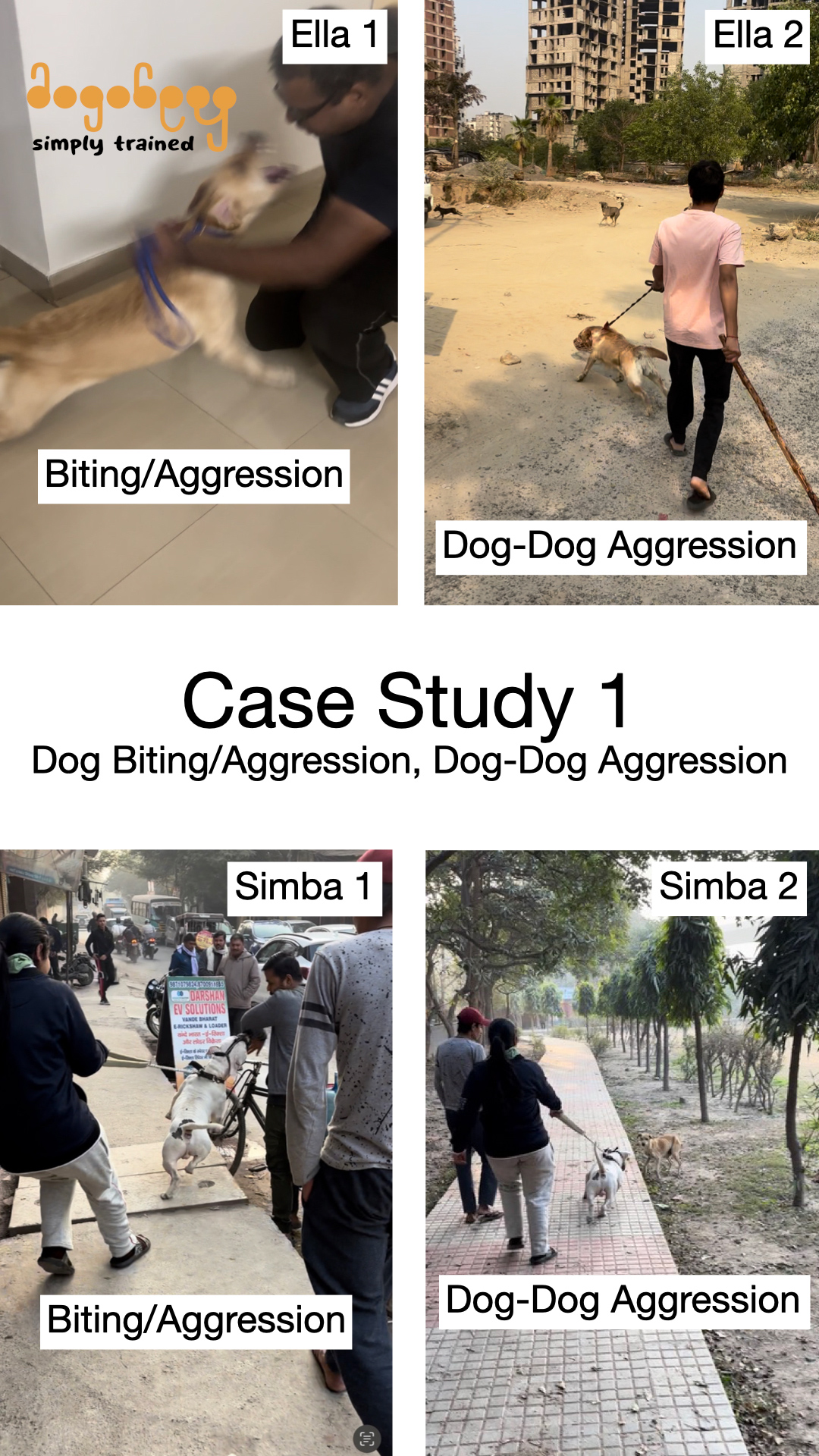20 mins read
The training for Leo, Simba and Bella were done at different dates and at two separate cities but they were dogs with same behaviour issue of fear of certain objects So, for simplicity, their training is described together in this case study.
Leo 3y and his son Simba 1y, both male Golden Retrievers with Amey/Mansi at Rohini, Delhi were wildly excited dogs before training. Their excitement around each other and around guests was abundantly palpable. In the training video, on my first day of training when I entered Amey’s house, one may note them barking and rushing to the sound of the doorbell, jumping on each other and rolling on the floor with excitement. They pulled on the leash on walks so much that Mansi said that she had not been able to walk the bigger and heavier Leo ever. So, how was it that such rambunctious dogs had fear of multiple objects? At the sound of the hair dryer or vacuum cleaner, they quickly moved away and shrivelled up in a ball in the corner. The mere switching on of the treadmill used to drive them in a panic. Certainly, getting the dogs on the treadmill and for them to walk on it was a pipe dream for Amey.
In another city, Gurgaon caregivers Toshi/Prashant were equally dismayed to find that Bella, their newly adopted 4m female Staffordshire Terrier put her foot down (literally!) when they tried to get her into the car. After much push and shove from its caregivers to get her inside the car, Bella was clearly afraid to be inside the car, shuffling around constantly. Similarly, getting her to exit the car by herself was a herculean task. So much for all the planned dreamy car rides with Bella’s wet nose sticking out of the rolled down car window, soaking up the wind in the racing car ride.
So, what is going on in these cases? Why do these dogs have fear of so many things? Let’s take Bella first. After talking to the caregivers on day 1 of training, I discovered that Bella had lived 4 out of its 5 months age inside the walls of a breeder’s kennel cage, 24 hours a day (even potty was done inside the cage). This is highly improper, to say the least. She was vaccinated, so her callous disregard to not take her out for a daily walk is especially painful. Post-vaccination, all dogs irrespective of their age need to walk outside and socialise with other dogs. Read Case Study 1 to understand why these elements in dog’s daily life are important for its good behaviour, how their absence led to biting/aggression triggers in Ella and Simba, and the dogs’ amazing rehabilitation by their awesome caregivers. Bella was not provided the proper foundation early on, and everything outside the kennel’s cage seemed foreign to her. So, when Toshi tried to walk her outside the house, Bella refused to step outside the house or walk there. The stairs outside the house, the concrete ground outside the house, the plants that she tentatively smelled at, the bike parked outside, every square inch was new and unknown to her. It is without exaggeration, that on day 1, it took us about half an hour to get her to the park, 500m away from the house. You may watch the video to understand how I trained Toshi to ensure a strong foundation for Bella’s good behaviour by overcoming her inhibition for the walk outside and her phobia of loud noises (from a roaring bike, clang of metal gate, Diwali crackers, etc). With the above background for Bella’s caged upbringing, her fear of the car may now be understandable. As with everything else, this big red mountain of metal was unfamiliar and a source of her anxiety to board it or be inside it.
But, unlike Bella, Leo and Simba did not have the misfortune to be caged early on in their life for much time. So, how can we then explain their phobia of so many things (hair dryer, vacuum cleaner, treadmill)? Well, Bella had one lucky break. She was fortunate that Toshi had recognised signs of her fears early on and proactively sought out help for these to be addressed within two days of getting her home. In Leo and Simba’s case, their fears went unaddressed for years and so were deep rooted. By Mansi’s admission, as a puppy, Simba gleefully took up running on the treadmill, but picked up the object’s fear from Leo as he matured. This situation is an opportunity to briefly discuss an important issue. It is common for caregivers to get a new dog to add to the pre-existing one. The expectation is to fully train the new one, but to ignore the other. This is not right as we are already setting up the new one to fall short on good behaviour. Would you be able to drive a car properly with a new perfect tyre with any of the other tyres not balanced and aligned? Even if we train the new dog perfectly, it will at some point pick up at least some bad behaviour from the other dog(s) in the house. This surely happened with Simba picking up Leo’s anxiety with the treadmill, and later on he also feared the noise from hair dryer and vacuum cleaner. I recommend that caregivers should only consider welcoming a new dog to their house if all existing dogs are balanced without any behaviour issues. I am appalled by the sheer number of caregivers who are already at their wit’s end with a dog with biting/aggression issues but anyway decide to add on another new dog without first resolving the issues with the old one.
Let us understand the chronology of events which lead to a dog developing fear of objects or certain situations. When a dog first encounters a situation it fears, and the caregiver doesn’t address it to overcome the dog’s fear at the first instance itself, thereon, the dog’s brain learns to fear that situation every time and it responds fearfully each time. Over time, with repeated exposure to the same situation, the resulting fearful response from the dog becomes an enduring coping mechanism. Let’s say as a puppy, a dog on its walk hears and sees a loud bike roar by for the first time. It will likely convey its anxiety by jumping up from being scared by the unfamiliar noise, barking or pulling itself on the leash away from the offending noise. Ideally, the caregiver should address the dog’s reaction to fear of the bike at this very first instance by showing it that the bike is not a threat and to take measures to relax the dog (the right way!) when the bike roars by. If not done, which unfortunately usually happens, the dog learns to fear the bike every time it whizzes past the dog and in future may develop an aggression to the bike as a forced coping mechanism. Most caregivers in such situation wait for the bike to ride away without appropriately training the dog’s reaction to the bike and then resume the walk. But, this is not addressing the problem. Moreover, the worst action that a caregiver can do is to scoop up the dog in the hands and move away. This is especially common with caregivers with small breed dogs when a pack of strays come barking and charging at the dog. The dog nestled in the caregiver’s embrace then is seeded with the mis-guided notion that every dog is a threat and is a cause for fear. In future, as an adult, the dog may itself initiate the aggression at other dogs by barking, growling or lunging at them. Read Case Study 1 to understand the genesis of aggression at other dogs from Anshul’s Lab, Ella and Ankita’s Pitbull, Simba and how this dog-dog aggression was resolved.
The path to overcoming the fear of objects for Leo, Simba and Bella was identical. A dog fearful of objects needs to be guided through the psychological obstacle with calm and confident energy of the caregiver. For each dog, I started by laying the foundation of good dog behaviour by working with their caregivers to groom their leadership with the dogs using calm and confident energy in various exercises. A daily quality walk routine along with exercise regimen was tailor made for each dog. Bella was duly socialised with both breed and stray dogs with complete face-to-face meetings. Leo and Simba’s dog-dog aggression training is pending but their other behaviour issues (undue excitement, separation anxiety and leash pulling on walks) were resolved with active lead from their caregivers. Once the caregivers of all three dogs had built their leadership by overcoming these pain points for their dogs, the caregivers were then suitably primed to tackle the issue of their dogs’ fear of objects.
In the case of Bella, the caregivers were trained so that both Toshi and Prashant led Bella calmly into the car and they learnt to manage her anxiety while she was inside the car with mock drives. I also showed them how to ensure that Bella was calm while exiting the vehicle. This is important as often an excited dogs jump out of the car and maintains this excitement outside. Indeed, such was the case with Czar and Talah, two lovely Husky females with Sheena. These were severely excited dogs in the house with guests, on walks, they entered the car with much gusto each time and exited the car with a giant leap, ready to take on the outside world with excitement. Watch how I worked with Sheena to resolve the car excitement and other behaviour issues with Czar and Talah. As for Bella, its caregivers practised daily with the skillset that I provided in mock car drives, and soon getting a calm Bella inside and out of the car became a breeze for them. Bella also relaxed inside the car and started to enjoy the car rides with her Staffordshire Terrier broad toothy grin. Suddenly, the dreamy car ride with Bella became a reality for its caregivers. So, Bella who earlier saw the car as a scary red mountain of metal now associated the car as a fun place to be in, which got her to explore new places with her beloved caregivers.
In the case of Leo and Simba, I started by showing Amey and Mansi how to first lead Simba calmly and with confidence to hop on the treadmill and stay walking on it. Simba’s exit from the treadmill was similarly guided with good assertive energy of the caregivers followed by a rewarding pat to the dog. Simba was tentative in the first round of this exercise but with a few more rounds, he began to learn to not fear the treadmill but began to associate it with caregiver’s rewarding pat once he duly completed each round. Leo was next. Having seen us working with Simba to overcome his fear with treadmill, he was amenable to at least try out the exercise. Leo took more rounds, time and effort than Simba but finally overcame his fear of the treadmill by walking on it. The caregivers repeated this homework daily for the next few days, building both their and the dogs confidence with the treadmill. In the end, Simba graduated to running on the treadmill (just like old times when he was a puppy) while Leo was content with simply walking on it at a leisurely pace. This strategy for overcoming the fear of the treadmill with the dogs was also employed to overcome their fear of the vacuum cleaner. As with treadmill, after a few days, both dogs learnt to tolerate the noise of the running vacuum cleaner and stayed calmly lying in their place while Amey swooshed the cleaner’s hose around the room in a mock clean up.
Finally, the pesky hair dryer was all that was left for the dogs to claim full victory over all their fears. I asked Amey to switch on the hair dryer. I readied myself for both dogs to do a Jordan, jump up high (I myself almost did with that irritating gritty noise) and scuttle away into a corner. But, I was pleasantly surprised that both dogs didn’t even flinch at the noise and calmly stayed in their place. To be sure that it was not a one off lucky break, I asked Amey to switch off and re-start the dryer. The blue monster noisily came to life again, but the dogs again held their ground stubbornly. The exercise was a success! Here is yet another opportunity to discuss an important point. Transforming a dog from bad to good behaviour is a journey similar to that for weight loss. We realise that when attempted, our body’s weight loss is not targeted at one spot but is uniformly distributed. Likewise, I have noted in a few cases that when caregivers start working to rehabilitate their dog, they report a global change in the dog’s personality with resolution of problems they never worked on as it was further down their checklist. We see this happen in this case too. Previously, I had shown Amey and Mansi how to manage the fear of dogs with all three objects and had asked them to daily practise the homework for this. They had practised with the treadmill and vacuum cleaner, but not with the hair dryer. Leo and Samba’s resilience to overcome their fear with the treadmill and vacuum cleaner helped to condition them not to fear the dryer too. Watch Vivek and Subhangi report similar experience with automatic resolution of dominance of Bliss over Hope when they worked to resolve other behaviour issues with their two dogs.
This case study shows that dogs want to and can overcome their behaviour issues if led ably by the calm and confident energy of their caregivers using the right skillset. I am ready to be a good boy/girl. My ball is in your court now human, says the dog to its caregiver.



